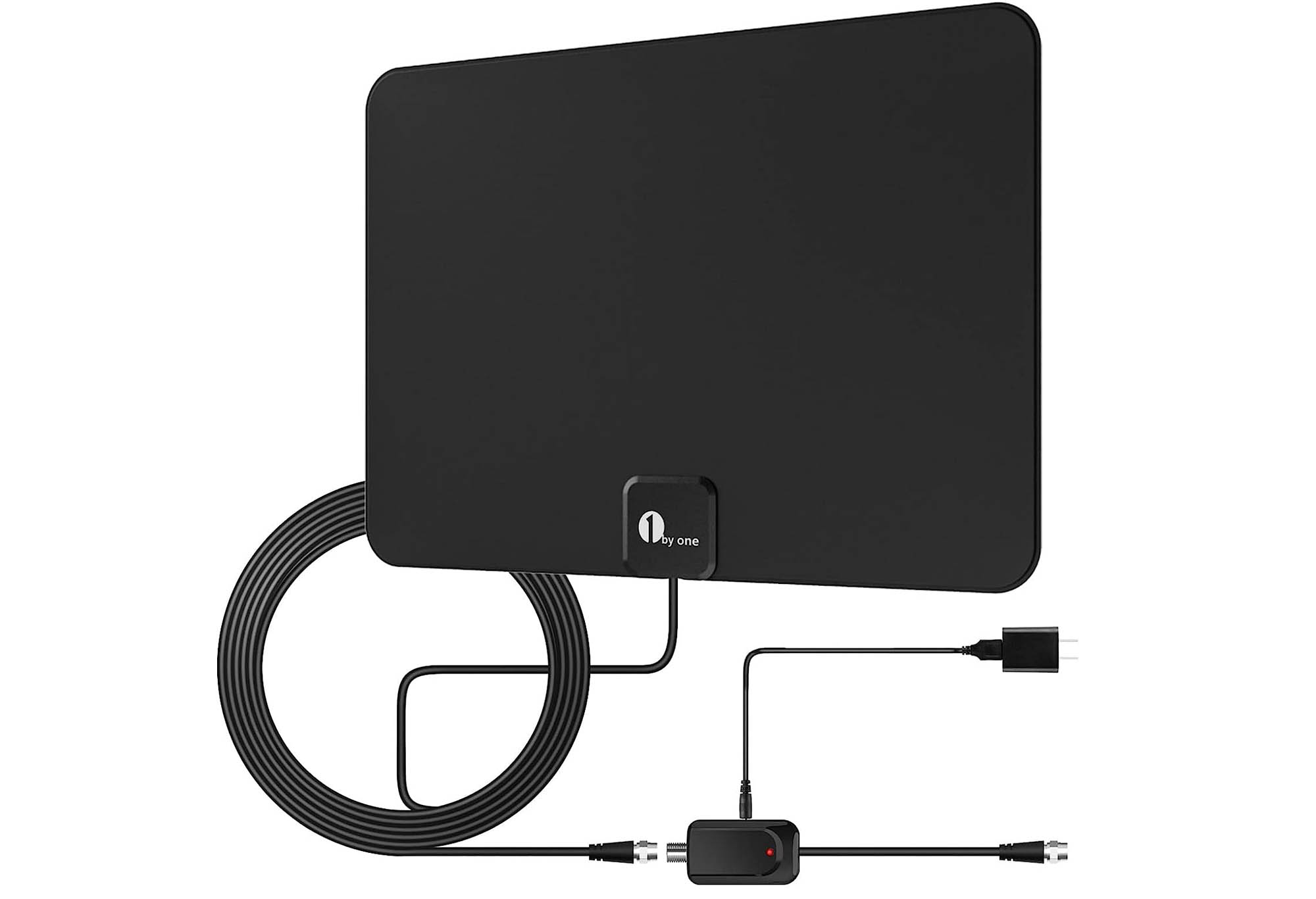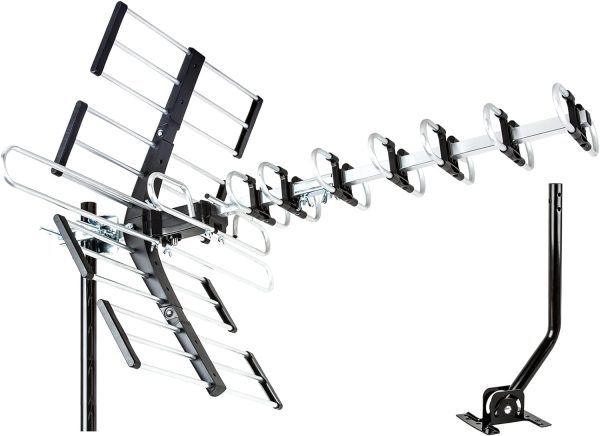
How Can You Find Free HD/4k Local TV Channels?
HD channels (and soon 4k channels) are available as a public service from broadcast stations across the country — and always free! The video formats are typically available in either 720p (HD) or 1080i (HD) depending on the network and station. 1080p (Full HD) resolution is currently not available over the air, although 4k feeds are currently being tested as ATSC 3.0 rolls out.
To receive digital HD channels (or Standard-Definition digital channels) all you need is a digital television (or digital receiver) and indoor or outdoor antenna (Find on Amazon) capable of both VHF/UHF to receive the signals free over the air. Then, you scan for available channels using the TV’s built-in channel scanner or device like an inexpensive analog-to-digital converter box (Find on Amazon). The TV or digital tuner can record the channels for which it gets signals.
Major networks like ABC, CBS, NBC, FOX, PBS and the CW all broadcast programing over-the-air (OTA). The high-definition signal, sent simultaneously with the standard-definition (SD) signal, can usually be found on the first sub-channel of the broadcast number. For example, the high-def signal for channel 5 would most likely be 5-1. Other broadcasts, including the SD version and other programming may be found on 5-2, 5-3, etc.
To find HD channels in your local area you can use the websites AntennaWeb.org or DTV.gov to locate broadcast facilities nearest you by entering your zip code. The results will provide you with directions in which to face your antenna to maximize the signal reception of a specific channel or network.


ATSC & ATSC 3.0
The Advanced Television Systems Committee (ATSC) standard was in development in the 1990s and in 2009 (US) officially replaced the National Television Systems Committee (NTSC) that had been established in 1941. This was a major update because former analogue signals were replaced with digital signals, which take up much less space on the bandwidth than analogue.
The next version, ATSC 2.0, with features such as advanced video compression and advanced video guides never launched because it was essentially outdated before it could be implemented as a standard.
NextGen TV (known as ATSC 3.0) is a major upgrade of the Advanced Television Systems Committee (ATSC) standards for television broadcasting that is slowly rolling out, but without any mandatory switch like 2009. The standard includes support for HEVC video channels with up to 2160p (4K) resolution at 120 frames per second, as well as wide color gamut, high dynamic range, Dolby AC-4, and MPEG-H 3D Audio.

